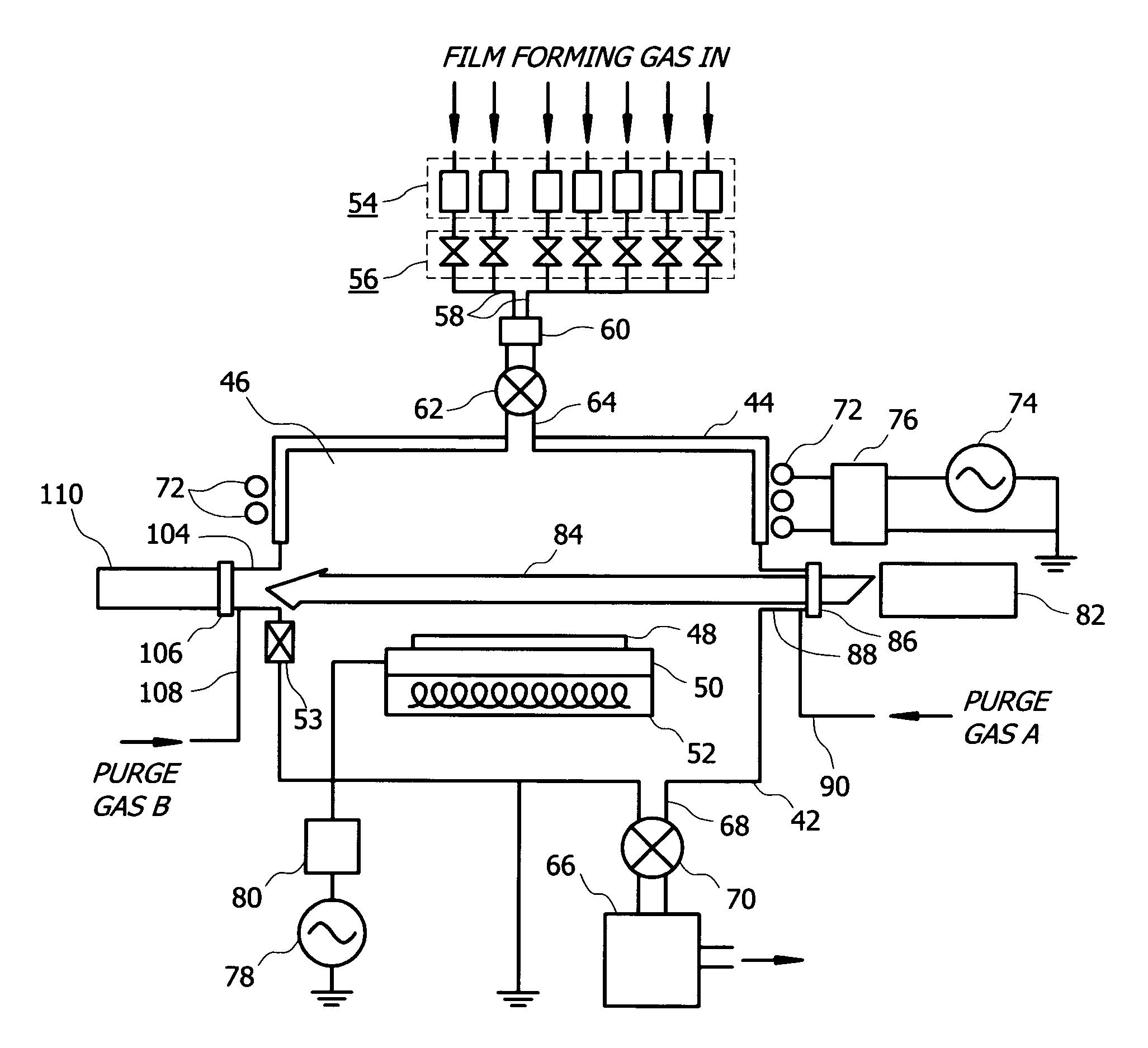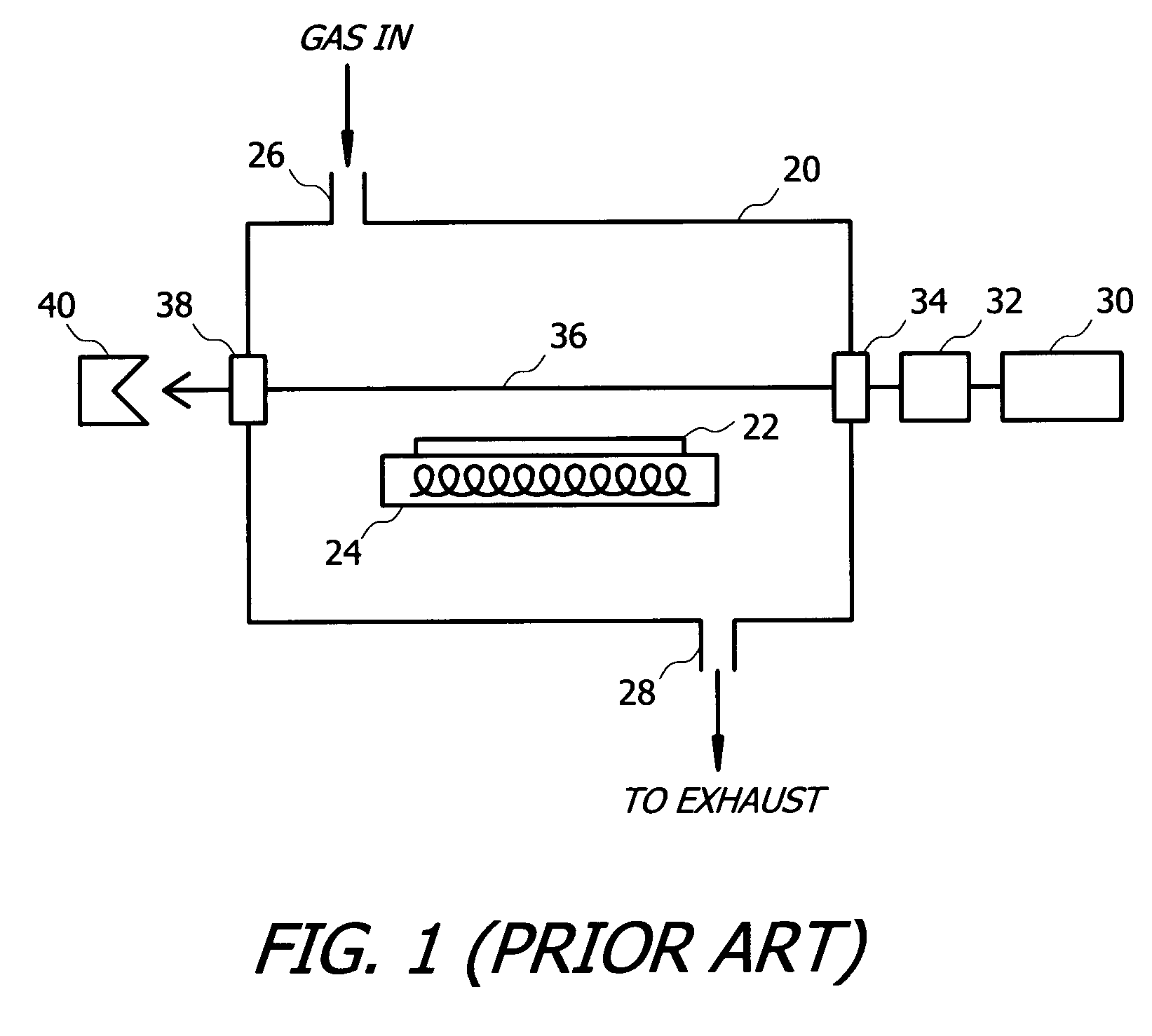Method for forming a semiconductor film including a film forming gas and decomposing gas while emitting a laser sheet
a technology of laser sheet and film, applied in the direction of chemical vapor deposition coating, coating, electric discharge tube, etc., can solve the problems of film thickness on the substrate to vary in the direction, limit the production rate of thicker nc-si:h films by pecvd, and structural defects that have deleterious electrical properties
- Summary
- Abstract
- Description
- Claims
- Application Information
AI Technical Summary
Benefits of technology
Problems solved by technology
Method used
Image
Examples
first embodiment
the present invention as applied to a high-rate chemical vapor deposition (CVD) apparatus for forming semiconductor thin films will now be described with reference to FIG. 2. Referring now to FIG. 2, the illustrated apparatus has a vessel base 42, preferably constructed of a suitably strong and conductive material such as stainless steel and is electrically grounded, and a vessel top or dome 44, which is made of a dielectric material such as aluminum oxide or aluminum nitride. The base 42 and the dome 44 combined to define a reaction chamber 46 therein.
A generally flat substrate 48 for coating a film thereon is placed inside the reaction chamber 46. The substrate 48 is supported by a mounting base 50, which also serves as a bias electrode. A suceptor 52 for heating the substrate 48 is attached to the bottom surface of the mounting base 50, and incorporates therein a heating element which may be energized from a current source (not shown) external to the chamber 46. The substrate 48 ...
PUM
| Property | Measurement | Unit |
|---|---|---|
| energy | aaaaa | aaaaa |
| thickness | aaaaa | aaaaa |
| thickness | aaaaa | aaaaa |
Abstract
Description
Claims
Application Information
 Login to View More
Login to View More - R&D
- Intellectual Property
- Life Sciences
- Materials
- Tech Scout
- Unparalleled Data Quality
- Higher Quality Content
- 60% Fewer Hallucinations
Browse by: Latest US Patents, China's latest patents, Technical Efficacy Thesaurus, Application Domain, Technology Topic, Popular Technical Reports.
© 2025 PatSnap. All rights reserved.Legal|Privacy policy|Modern Slavery Act Transparency Statement|Sitemap|About US| Contact US: help@patsnap.com



